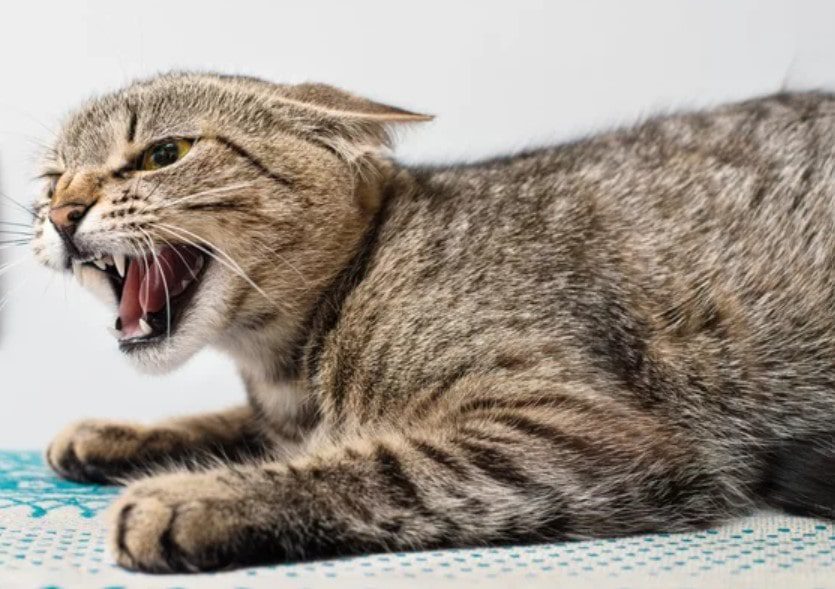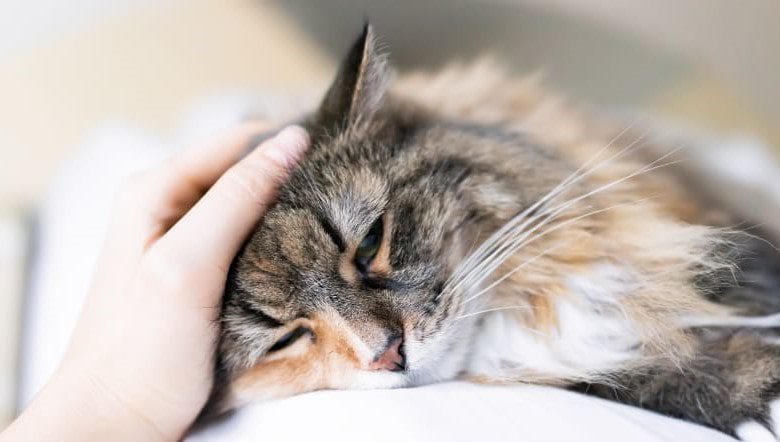Table of Contents
What Is Rabies in Cats?
Rabies is a viral disease that affects the central nervous system of mammals, including cats. The disease is typically transmitted through the bite of an infected animal, like a dog or bat, and can affect both people and animals. Once the virus enters the body, it travels through the nerves and targets the brain, leading to severe symptoms that often result in death.
Cats can be particularly vulnerable, and while they are sometimes naturally resistant, the disease remains fatal if left untreated. Rabies has been recognized and described since 2300 BC, making it one of the oldest known viral diseases to affect warm-blooded animals. Symptoms may start showing within a few days to a week, and unfortunately, in most cases, the animal will die within 7 days of exposure.
How Can a Cat Get Rabies?
Rabies in cats is most often spread through a bite from an infected wild animal, such as raccoons, foxes, skunks, or bats. These rabies carriers can transmit the virus when they come into contact with a domestic animal like a cat. In the United States, laws are in place to help prevent the spread of rabies by mandating vaccines for domestic animals, including cats and dogs.
However, without proper vaccination, the risk of infection remains high, especially in areas where rabies has been reported. The CDC emphasizes the importance of vaccination to prevent rabies from spreading to domestic animals and to reduce the overall threat to public health.rabies is still spreading among pets in the United States.
In April 2025, two cases of rabies were found in raccoons in Oswego, New York, raising concerns about the spread of the virus. According to the CDC, more than 90% of rabies cases in the U.S. are reported in wild animals.Rabies can be controlled through appropriate vaccination.
What Are the Symptoms of Rabies in Cats?
If your cat has been attacked by a wild animal, it’s crucial to look for signs of rabies. At first, you may notice your cat feeling anxious or not eating like usual.As the virus spreads, lack of coordination, dilated pupils, or even abnormal vocalization can occur.
If there’s any exposure to a human or other animal bites, the risk increases, and it’s important to take your pet to the vet immediately for a booster shot or vaccine. In such cases, your cat might need to be quarantined at an approved facility or at home under officials’ watch for weeks to ensure safety. Some other Signs include:
- Changes in behavior: Rabies can cause some cats to change their behavior more than usual. They may become more upset, show extra affection, or even isolate themselves. Cats that are usually calm and extroverted may suddenly act in ways that are uncharacteristic, signaling potential illness.
- Aggression: A cat can show aggression towards humans, other cats, or other animals.
- Drooling: Rabies affects the muscles in a cat’s mouth, making it difficult for the cat to swallow and causing trouble with eating and drinking. Additionally, the cat may drool or foam at the mouth, which indicates the presence of rabies.
- Loss of Muscles: Cats’ muscles start to lose function, and they can become paralyzed or enter a coma. These are the final stages of rabies.
Causes of Rabies in Cats

Rabies is a deadly virus from the Rhabdoviridae family that can cause severe damage to a cat’s nervous system. The virus usually spreads through saliva, often after an infected animal bites. If your cat has direct contact with wildlife or other animals, they could be at high risk of exposure.
Cats that are unvaccinated are more likely to get sick from this virus strain, as they don’t have the protection a vaccine provides. Outdoor cats, in particular, face a significant risk of encountering an infected animal, which increases the potential for transmission.
Vaccinating your cat helps keep them safe, protecting them from the virus and reducing the risk of critical health issues. Without vaccination, an unprotected cat may suffer severe damage, and rabies can be fatal if not treated.
Should my cat be vaccinated?
Rabies vaccination is legally required in most states and provinces. Getting your cat vaccinated for rabies early is very beneficial for both you and your cat. Rabies vaccines are very effective and are typically given to kittens at 3 to 4 months of age, which is very important. It is essential to vaccinate them at a young age to keep both yourself and your pets safe
Treatment of Rabies in Cats
There is no treatment for rabies infection. If you notice signs of rabies in your cat, it should be immediately separated and kept in quarantine to protect itself and other pets from harm. Contact your vet and follow their instructions carefully.
Can we catch rabies from cats?
There is no doubt that rabies can be transmitted from cats to humans, but it is very rare. If a cat is infected with the rabies virus, it can be transmitted to humans through direct contact with its saliva. This usually happens when the cat bites or scratches someone, or if the drool comes in contact with broken skin or a mucus membrane. I’ve had pet owners ask me about this after their cats acted strange, and I always recommend seeing a doctor immediately if there’s any chance of exposure. Rabies vaccines can help prevent the infection from progressing, especially if administered quickly after being exposed.
FAQs
1. What are the initial signs of rabies in a cat?
The first signs of rabies in cats can include behavioral changes like aggression, fearfulness, or confusion. As the disease progresses, they may also show signs of weakness, drooling, and difficulty swallowing.
2. Is it possible to get rabies from a cat bite?
Yes, a cat bite can transmit rabies if the cat is infected. The virus is typically spread through the saliva, so if a bitten person has open skin or a wound, there’s a risk of getting infected.
3. What is the chance of a cat having rabies?
The presence of rabies in a cat also depends on where you live. If rabies is common in your area and the cat has had contact with wild animals that carry the virus, the risk increases, though it’s still relatively rare in domestic cats.
4. Can I get rabies from my house cat?
While it’s possible to get rabies from a house cat, it’s uncommon. Most domestic cats are vaccinated against rabies, and the virus is typically spread by wild animals. However, if your cat has had exposure to wildlife, it’s best to consult a vet.
5. How do cats act if they have rabies?
Cats with rabies may show aggressive behavior, excessive drooling, and have difficulty swallowing. In some cases, they may also experience paralysis or become overly calm and lethargic before showing signs of aggression.
